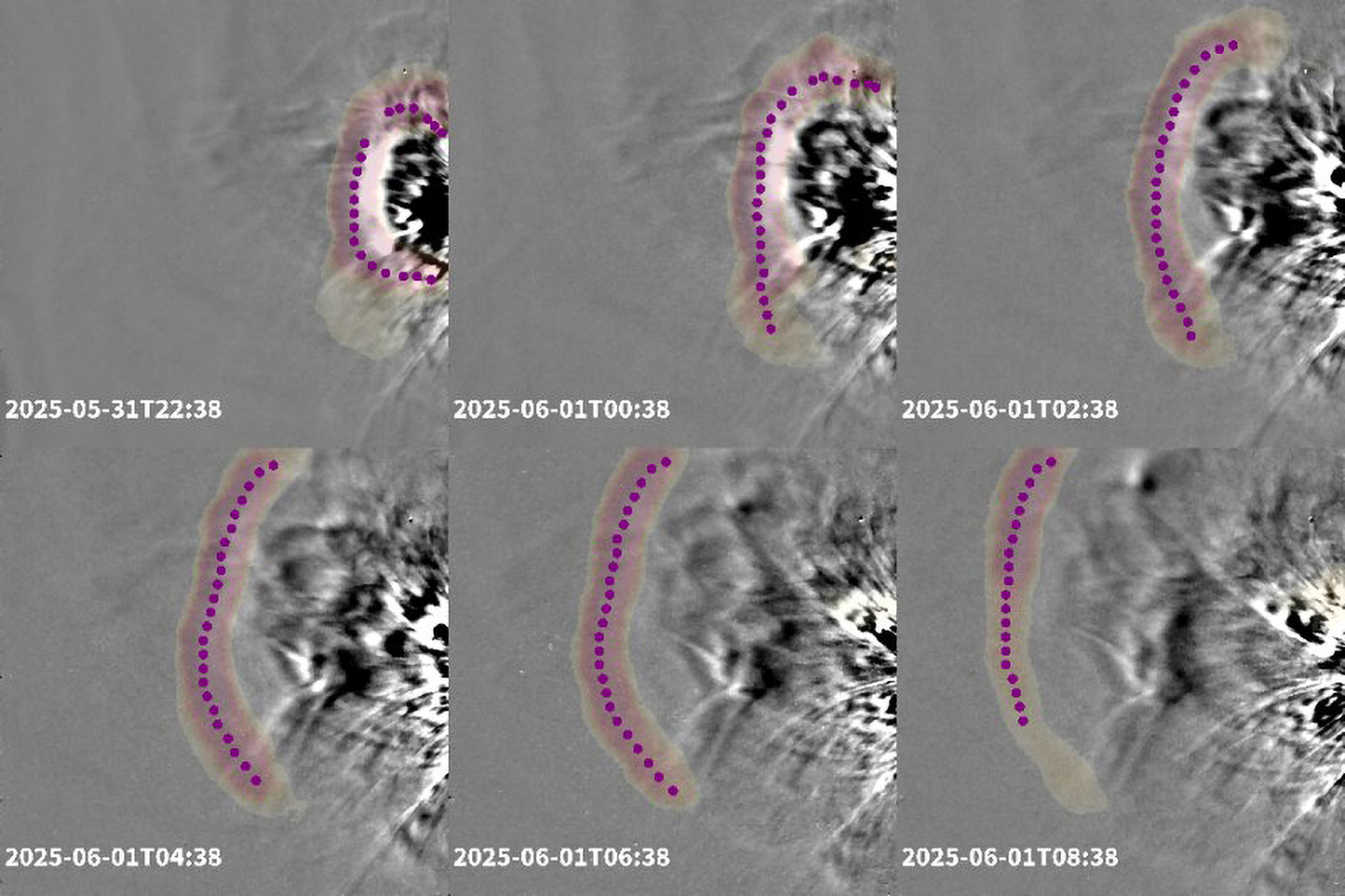Artificial intelligence improves the prediction of solar storms
Two new scientific studies by GeoSphere Austria provide important contributions to the analysis and prediction of space weather.
The Sun constantly emits radiation and charged particles into space. A solar storm happens when the Sun ejects a large number of particles within a short period of time, together with strong magnetic fields. When a solar storm hits the Earth's magnetic field, it can cause auroras and, in extreme cases, disrupt satellites, navigation systems and power grids.
To provide timely warnings of such events, the Space Weather Office at GeoSphere Austria in Graz is working on innovative methods for real-time prediction of solar storms, supported by artificial intelligence (AI) methods. Two recently completed scientific studies show great progress in this area and are among the world's leading research in this field. Both studies arose from sub-projects within an FWF-funded project entitled ‘Improved Solar Storm Modelling with Machine Learning’ (project leader: T. Amerstorfer).
The Beacon2Science subproject used machine learning (an AI method) to improve image data from space and make it available for forecasting in near real time:
NASA's STEREO mission uses special cameras in space to observe the Sun and solar storms. However, the high-quality, complete image data is only available on Earth three to four days after it is captured. On the other hand, images of significantly lower quality, known as beacon data, are available very quickly, in near real time.
‘Our new AI program learns what a high-quality image should look like by studying existing data and uses this knowledge to improve the quickly available images of lower quality,’ explains Justin Le Louëdec from the Space Weather Office at GeoSphere Austria. ‘The results are very promising: with this method, we are bringing the quality of the quickly available image data much closer to that of the high-quality image data that arrives a few days later. The extra time we gain from that is important, because these images help us to better analyse and predict solar storms.’
Image data from the Sun (such as from Beacon2Science) is still largely analysed by humans to detect solar storms and potential threats to Earth. This is where the second sub-project, STRUDL (Solar Transient Recognition Using Deep Learning), came in, which dealt with the automated detection of solar storms in image data:
‘This is a very complex problem: every solar storm looks slightly different, and the image quality often varies. Until now, analysis has been a time-consuming task for researchers,’ says space weather expert Maike Bauer from GeoSphere Austria. ‘With artificial intelligence methods, such as the program we have developed, solar storm images can be evaluated quickly and automatically, and important characteristics such as direction of propagation and shape can be determined. This is a crucial step towards automated space weather forecasting. The sooner we know what is coming, the better we can respond to it on Earth, whether in satellite operations, aviation or the power grid.’
The AI developed was trained using thousands of images from NASA's STEREO-A space probe and can now reliably detect and track strong solar storms in particular. Automatic detection still has room for improvement when it comes to weaker or overlapping solar storms. But the project also showed that the more training data the program processes, the better the results.
This method will also be used in future European missions, such as the European Space Agency's Vigil mission, which will observe the Sun from the so-called Lagrange point L5 starting in 2031. This position offers an additional point of view on solar storms, allowing for a better assessment of their direction and speed.
A possible next step is to combine both sub-projects to automatically detect solar storms and potential hazards for Earth in the automatically improved image data from the Sun.
Both projects show that modern artificial intelligence methods are a powerful tool in space research and contribute to better protection of Earth's infrastructure.
Translated with DeepL.com (free version)

